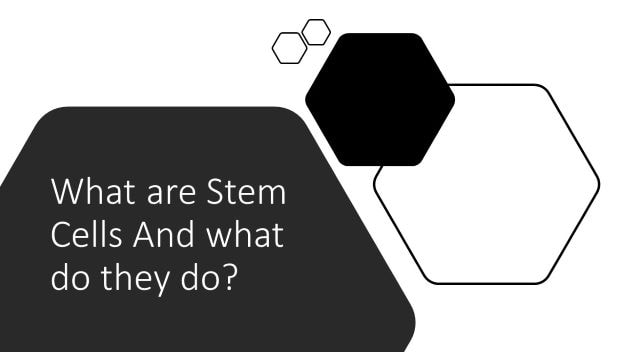Adult stem cells
Adult stem cells are cells that reside in different tissues. They have the ability to differentiate and proliferate, and they are able to replace dying cells and heal tissue when injured. This ability makes them very valuable in the treatment of degenerative diseases and aging. In addition, they may even be useful in the development of new therapies for cancer. However, the exact function of adult stem cells is not completely understood. Researchers are still trying to identify their genes, molecules, and niches, and how to best harness them for healing purposes.
Peripheral stem cells
Peripheral stem cells can help treat many types of cancer and other diseases. These cells can be collected from peripheral blood early in the course of the disease, and sufficient numbers can support multiple courses of treatment.
Induced pluripotent stem cells
Induced pluripotent stem cells (iPSCs) are adult cells that have undergone genetic reprogramming to become embryonic-like cells. The process involves forcing the expression of certain genes to maintain the defining properties of ES cells. The process has the potential to transform many different types of cells.
Mesenchymal stem cells
Mesenchymal stem cells are progenitor cells that have the power to differentiate into mature tissue cells. These cells are responsible for the regeneration of damaged tissues after injury. They release proteins that reduce inflammation and stimulate the growth of new blood vessels and connective tissues. As a result, these cells have a high therapeutic potential.
Amniotic stem cells
Amniotic fluid stem cells (AFSCs) are derived from the amniotic fluid and are a powerful tool in stem-cell-based therapies. Monoclonal, genomically stable AFS cell lines have been developed and have shown a wide diversity of differentiation potential, including the ability to differentiate into all three germ layers.
Cord blood stem cells
Cord blood is a rich source of stem cells that can be used to treat many health conditions. These cells are called hematopoietic stem cells, and they can become all the types of blood cells a person needs throughout their lifetime. Cord blood stem cells can also be used in bone marrow transplants. Researchers have found that cord blood stem cells can help treat nearly 80 different diseases and conditions.
Adult mesenchymal stem cells
Despite widespread belief, adult mesenchymal stem cells (MSCs) are not limited to the bone marrow. These cells are also found in other tissues, including body fat, molar teeth, and amniotic fluid. Cord tissue is an excellent source of MSCs because it is readily available and non-harmful.
ESCs
Although the origin of ESCs is unclear, there are several common factors that contribute to the differentiation program of ESCs. These factors are responsible for regulating chromatin structure and DNA accessibility, which ultimately controls the identity of ESCs. Histone acetylation, for instance, neutralizes the positive charge of histone lysine residues and contributes to the open chromatin state in ESCs. A variety of treatments, including the use of HDAC inhibitors, enhance nuclear dynamics, reduce differentiation propensity, and support the self-renewal program of ESCs.
ESCs from umbilical cord blood
ESCs from umbilical cord blood are cells that have the potential to differentiate into different types of tissues in the body. These cells are found in many parts of the body, including the bone marrow and the spleen. However, the numbers of these cells in various compartments of the body are very small. There are some advantages of using these cells, such as their ability to be used in the treatment of various diseases.
By the way, I've touched upon stem cell research and manufacturing challenges in a separate post. You may check it out here.
Disclaimer: Information presented here is for educational purpose only. Stem cell research, manufacturing thru commercialization is illegal in several countries across the world. Ensure that you are fully complying to the laws before undertaking any activity and/or therapies involving stem cells.
Related Reading:
- Kaizen for pharmaceutical, medical device and biotech industries
- How to cut costs strategically using Kaizen
- Top 30 Continuous Improvement Tools
- How to Improve Operational Excellence in the Pharma Industry
- Top 10 Change Management models
- Continuous Improvement for Drug Industry: Part 1: Introduction to Digitalization in Pharmaceutical and Medical Device R&D.
Follow Shruti on Twitter, Facebook, YouTube, LinkedIn
Categories: Life Sciences | Operational Excellence
Keywords and Tags:
#stemcells #stemcellresearch #continuousimprovementforlifescienceindustry #continuousimprovement





















